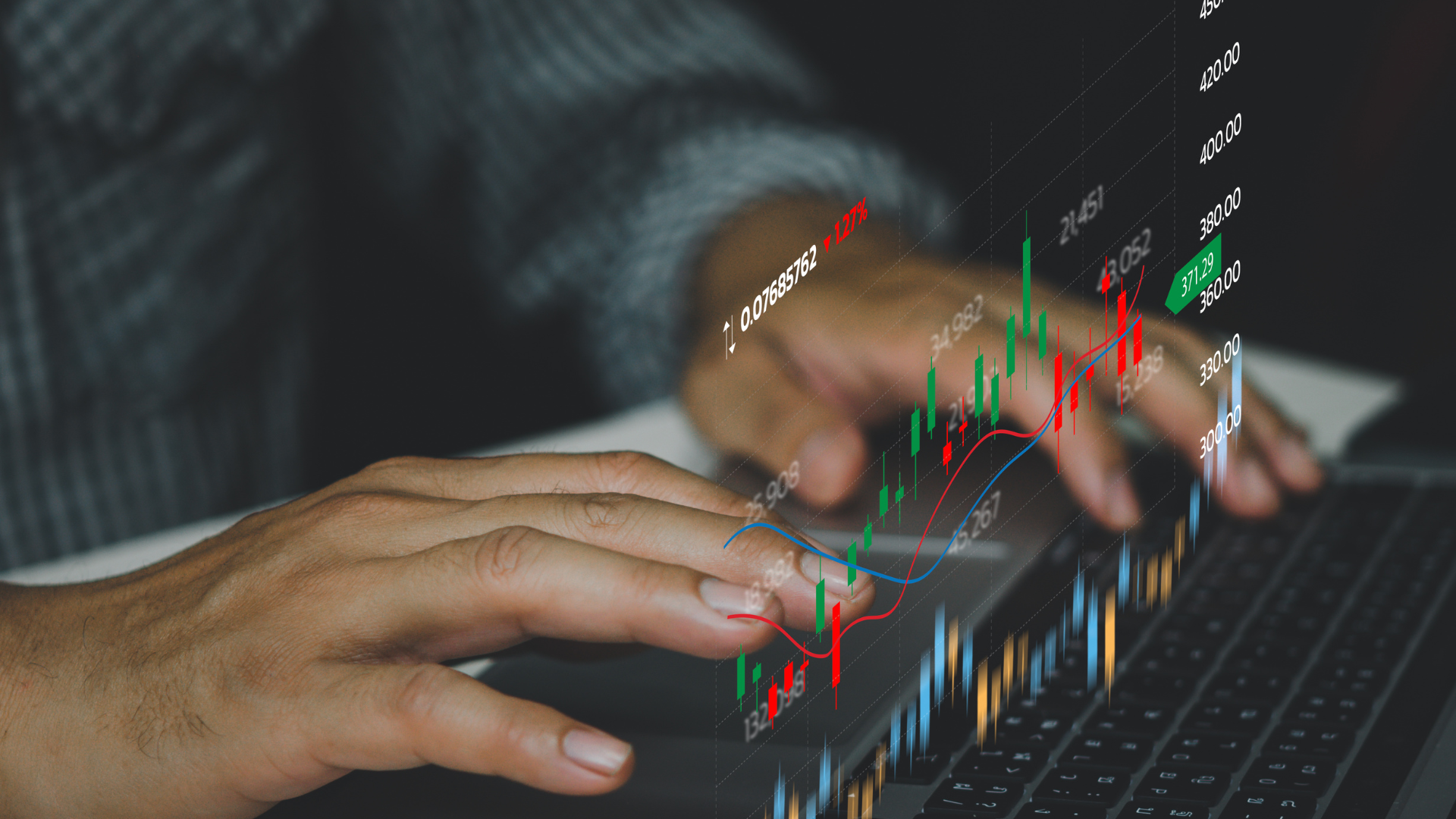The Psychology of Market Bubbles: Lessons from Historical Events
Introduction
Market bubbles are periods of rapid and unsustainable price increases in asset classes such as stocks, real estate, or commodities, followed by a sudden and severe downturn. During a bubble, asset prices become detached from their intrinsic value, driven by speculative buying and excessive optimism. This creates a self-reinforcing cycle where prices continue to rise solely based on the expectation of further increases.
Understanding the psychological factors behind market bubbles is crucial for investors and traders alike. The behavior of market participants during these periods is often driven by emotions and irrational thinking, rather than objective analysis. By understanding these psychological factors, investors can better navigate volatile market conditions, avoid substantial losses, and identify potential investment opportunities.
This blog post aims to provide a comprehensive understanding of market bubbles, delving into their anatomy, the psychological factors driving them, lessons learned from historical bubbles, and strategies for navigating them. By examining famous historical examples such as the Dutch Tulip Mania, the Dot-Com Bubble, and the Housing Bubble of 2008, readers will gain insights into the typical stages of market bubbles and the psychological biases that fuel them. The post will conclude with actionable advice on setting realistic investment goals, developing an investment plan, and incorporating behavioral finance principles into decision-making.
The Anatomy of Market Bubbles
Stage 1: Stealth Phase
During the stealth phase, a select group of savvy investors identifies an undervalued asset class with significant growth potential. Prices gradually begin to rise, but this phase often goes unnoticed by the broader market.
Stage 2: Awareness Phase
In the awareness phase, news and media attention start to highlight the performance of the asset class, attracting more investors. Prices rise at an accelerated pace, and the general public becomes aware of the asset's potential.
Stage 3: Mania Phase
The mania phase is characterized by a surge in prices fueled by mass speculation and euphoria. Investors rush to join the trend, fearing they might miss out on substantial profits. This phase is marked by irrational behavior and a detachment from fundamental valuation metrics.
Stage 4: Blow-off Phase
In the blow-off phase, the bubble reaches its peak. Prices experience a parabolic rise, often driven by excessive leverage and a widespread belief that the asset's value will continue to skyrocket indefinitely. However, this phase is unsustainable, and a sharp reversal usually follows, leading to a collapse.
The 17th-century Dutch Tulip Mania

One of the most renowned historical instances of a market bubble is the Dutch Tulip Mania. Tulip bulbs started to become quite popular in the 1630s, and prices skyrocketed. Tulip bulbs were purchased by people from all walks of life, including the wealthy and middle class, in the expectation that prices would grow in the future. The bubble, however, burst in 1637, causing a sharp drop in prices and substantial financial losses for many people and investors.
The late 1990s Dot-Com Bubble
An updated Dot-Com The explosive expansion of internet-based businesses in the late 1990s contributed to the bubble. Even though these businesses had little to no profitability or income, investors began investing heavily in them. A market slump and significant losses for investors
and businesses resulted from the bubble in internet-related company stock prices bursting in 2000. It produced one of the best ones, comparable to Amazon, Google, and Apple.
The 2008 financial crisis and the housing bubble
The Housing Bubble of the mid-2000s, another notorious incident, was characterized by an excessive rise in real estate values brought on by loose lending regulations and speculative buying. More people entered the market as house prices rose, many taking on debt to pay for properties in the hopes of making a profit. Housing prices, however, fell as the bubble burst, starting a financial crisis with far-reaching effects.
Psychological Factors Driving Market Bubbles

A. Herd Mentality and Fear of Missing Out (FOMO)
One of the key psychological factors driving market bubbles is herd mentality, where individuals feel compelled to follow the crowd and engage in the same investment behavior. The fear of missing out (FOMO) intensifies during the mania phase of a bubble when investors see others profiting and fear being left behind.
B. Over-Optimism and Irrational Exuberance
During market bubbles, over-optimism and irrational exuberance take hold. Investors become excessively positive about the future prospects of the asset, leading them to disregard warning signs or fundamental analysis. This optimism feeds into a cycle of further buying and rising prices.
C. Information cascades and confirmation bias
Market bubbles are significantly influenced by confirmation bias, which is the tendency for people to reject opposing data in favor of information that supports their preexisting opinions. Information cascades, in which people make decisions based only on the acts of others without completing the independent analysis, enhance this prejudice.
D. The Availability Heuristic and Anchoring
When people make judgments, they have a propensity to place a lot of weight on the first piece of information they are given. This is known as anchoring. Investors may become fixated on previous price peaks or forecasts as a result of this bias, which will distort how much value they place on an item. On the other side, the availability heuristic leads people to overestimate the likelihood of events based on how quickly they can recall instances from memory.
E. The impact of behavioral biases on investment choices during market bubbles
Market bubbles are caused by a number of behavioral biases, such as loss aversion, recency bias, and overconfidence. Investors affected by these biases are more likely to pursue prior performance, underestimate dangers, or hang onto losing assets in the hopes of a turnaround.
Lessons Learned from Historical Market Bubbles

One of the most important things we can learn from past stock market bubbles is how crucial it is to continue to take a disciplined and logical approach to investing. It's critical to base investing choices on solid research and long-term fundamentals as opposed to giving in to the hype and emotions of a bubble.
The distinction between investing and speculating is one that investors need to be aware of. Making long-term decisions based on an examination of an asset's intrinsic worth is part of investing. Contrarily, speculation entails placing quick wagers on price changes without taking the underlying value into account.
Making informed investment decisions requires extensive research and analysis. The fundamentals of an asset, such as its underlying worth, market circumstances, and potential hazards, must be assessed. Investors may make knowledgeable decisions and avoid getting sucked into a market bubble by doing their homework.
Successful investment requires both risk management and diversification, especially when markets are inflated. Investors can lessen the effects of a single bubble burst and safeguard
their portfolios from significant losses by distributing their assets across many asset classes and geographical areas.
Recognizing warning signs and avoiding the euphoria of market bubbles is crucial. This involves closely monitoring market conditions, staying informed about economic indicators, and being aware of speculative behavior and excessive valuations. By maintaining a healthy skepticism and being cautious during periods of market exuberance, investors can protect themselves from significant losses.
Strategies for Navigating Market Bubbles

Setting realistic investment goals and time horizons is essential when navigating market bubbles. It's important to align investment objectives with personal financial circumstances and risk tolerance, avoiding the temptation to chase unsustainable returns.
Developing a well-defined investment plan and sticking to it can help investors stay disciplined during market bubbles. The plan should outline asset allocation, risk tolerance, and rebalancing strategies. By following a plan, investors can avoid impulsive decisions driven by market euphoria or panic.
Taking a contrarian approach can provide opportunities during market downturns. By avoiding herd mentality and seeking undervalued assets, investors can capitalize on market inefficiencies and position themselves for potential future gains when the bubble eventually bursts.
Seeking professional advice and consulting with financial advisors can be beneficial, especially during market bubbles. Financial professionals can provide objective analysis, guidance, and help investors navigate volatile market conditions.
Incorporating behavioral finance principles into investment decision-making can help investors overcome biases and make more rational choices. This includes being aware of cognitive biases, regularly reviewing and adjusting investment strategies, and seeking feedback from trusted sources.
Conclusion
In this blog article, we looked at how market bubbles work, the psychological reasons that cause them, the lessons we can learn from past bubbles, and coping mechanisms. In order to gain insight into the stages of bubbles and the biases that feed them, we looked at well-known examples such as the Dutch Tulip Mania, the Dot-Com Bubble, and the Housing Bubble of 2008.
Investors must comprehend the psychology of market bubbles. Investors may make wise judgments, limit excessive risk-taking, and shield their portfolios from substantial losses by being aware of the psychological forces at work.
To become more informed investors, it's essential to apply the lessons learned from historical market bubbles. This includes maintaining a rational approach to investing, conducting thorough research, diversifying portfolios, recognizing warning signs, and seeking professional advice when needed. By integrating these strategies and incorporating behavioral finance principles, investors can navigate market bubbles with greater confidence and make sound investment decisions.
Are you tired of juggling multiple platforms and struggling to stay organized during earnings calls?
Upgrade your earnings calls with our game-changing app! Streamline investor communications, schedule calls, and share presentations effortlessly. Maximize engagement with real-time analytics and crystal-clear audio. Elevate investor confidence and satisfaction.
